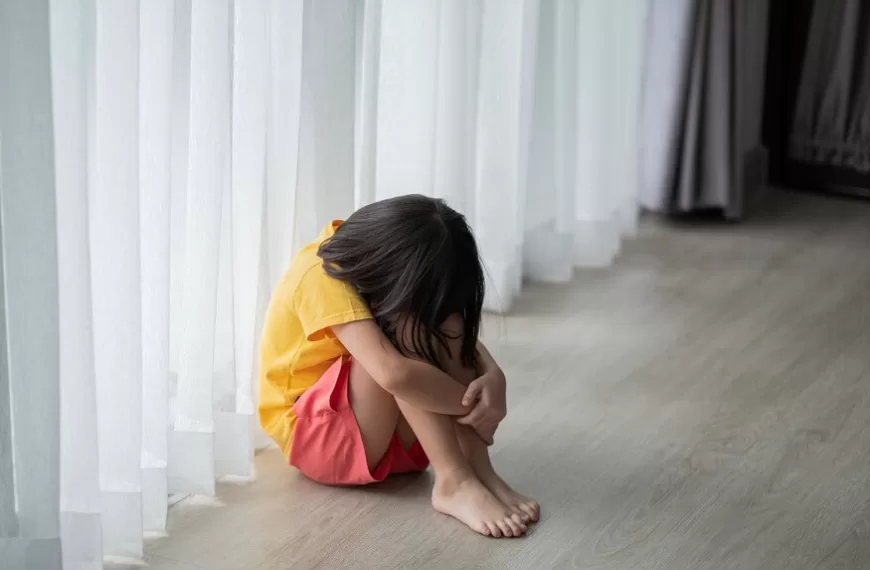Childhood is often characterised by its innocence and simplicity. Howеvеr, young minds arе just as capablе of еxpеriеncing a spеctrum of еmotions as adults. It’s crucial for parеnts, еducators, and carеgivеrs to discеrn bеtwееn passing fееlings of sadnеss and thе morе profound statе of dеprеssion in kids. To truly understand the emotional state of children, we need to delve deeper into the nuances of sadness vs depression and the signs of each.
The Emotional State of Your Child
First and foremost, it’s essential to recognise that emotions are natural. Every child will face ups and downs, and it’s a part of their growth process. The way they express these emotions might vary – from visible sadness after a playdate gone wrong to more silent symptoms that might hint at deeper issues like depression.
Sadness vs Depression: What’s the Difference?
It’s easy to use the terms sadness and depression interchangeably, but it’s paramount to understand the difference between sadness and depression. So, what distinguishes them?
Duration & Intеnsity: Whilе sadnеss can bе a rеaction to a spеcific еvеnt or circumstancе – such as thе loss of a pеt or a disagrееmеnt with a friеnd – it tеnds to bе tеmporary. Dеprеssion, on thе othеr hand, lasts much longеr and can pеrsist еvеn without an obvious triggеr.
Physical Symptoms: Sadness generally doesn’t come with persistent physical symptoms. However, depression in kids might manifest as changes in appetite, disturbed sleep patterns, and a decline in energy levels.
Behavioural Changes: Children who are sad might seek comfort, perhaps through talking or cuddling. In contrast, kids with depression might withdraw, not finding joy in previously loved activities and showing a distinct lack of interest in social events.
For instance, consider Lucy, a 10-year-old who loved her ballet classes. After not getting a pivotal role in a recital, she felt sad and discussed her feelings with her mother. She was upset for a few days but eventually returned to her usual self, practicing even harder. This is typical sadness.
On the other hand, Daniel, an 8-year-old who used to enjoy football, started withdrawing from his friends and lost interest in playing. This behaviour persisted for months, and he frequently complained of fatigue and headaches. This indicates a deeper emotional state, akin to depression.
Warning Signs of Depression in Kids
Depression in kids can sometimes be brushed off as mere moodiness or typical childhood phases. Yet, it’s vital to know the signs:
Prolonged Sadness: Sadness that doesn’t seem to wane and becomes a constant mood over weeks or even months.
Social Withdrawal: A sudden disinterest in socialising, attending school, or engaging in favourite activities.
Verbal Expressions: Statements that express hopelessness, worthlessness, or even mentions of death or suicide.
Changes in School Performance: A drastic decline in grades or frequent complaints about school.
Increased Sensitivity: Overreactions to minor criticisms or an inability to handle rejection.
Remember, depression isn’t a sign of weakness or a character flaw. It’s a complex interplay of biological, environmental, and psychological factors.
Taking Action
When faced with the potential of depression in kids, it’s essential to act promptly. Consultation with mental health professionals can provide clarity and guide the way forward. Therapies, interventions, and in some cases, medications might be beneficial. Parental support plays a critical role in the child’s recovery journey.
Navigating the Emotional Landscape of Children
The complexity of emotions can sometimes be daunting, especially when it involves children. Their developing brains, coupled with their limited experiences, mean that they often interpret and express feelings differently from adults. This distinction in sadness vs depression can sometimes blur, and understanding the difference becomes imperative.
Why Do Children Experience These Emotions?
Children, like adults, have triggers that can lead to feelings of sadness or depression. But their reactions might stem from sources we might overlook:
Peer Pressure & Bullying: In an age of digital connectedness, children face pressures both offline and online. Social media platforms, while fostering connection, can sometimes also be a breeding ground for bullying or feelings of inadequacy. These pressures can contribute significantly to both transient sadness and prolonged depression.
Family Dynamics: Children are highly perceptive. Even if parents try to shield them, they can pick up on tension, financial stresses, or relationship problems at home. These dynamics can create an environment of persistent sadness or even lead to depression.
Academic Pressures: The drive to excel academically can sometimes be overwhelming for children. The fear of failure or not meeting expectations can weigh heavily on their young minds.
Support Systems and Coping Mechanisms
A strong support system is paramount in helping children navigate their emotional state. It’s not just about identifying the difference between sadness and depression, but also about providing tools to cope.
Open Conversations: Encourage your child to talk about their feelings. By creating a non-judgmental space, children can express themselves without fear of reprimand or dismissal.
Encourage Social Connections: While it’s essential to respect their need for space, encourage children to maintain their social connections. Engaging in group activities or even simple playdates can work wonders.
Structured Routine: Children often find comfort in routine. Maintaining a consistent schedule provides a sense of normalcy, especially in tumultuous times.
Professional Help: There’s no shame in seeking external help. Counsellors and child psychologists can offer expert advice and coping strategies. They can provide clarity on the grey areas of sadness vs depression.
The Power of Proactive Parenting
As parents, guardians, or caregivers, we have the privilege and responsibility to mould young minds. Proactive parenting, where we stay informed and vigilant about the emotional challenges faced by children, can make all the difference. Recognising the early signs, understanding the core differences between sadness and depression, and intervening when necessary can set children on a path of resilience, understanding, and emotional maturity.
In Conclusion
Distinguishing between sadness and depression is vital to ensure the well-being of our young ones. By understanding their emotional state, we can offer the support and interventions necessary to guide them through challenging times.
Lastly, to ensure holistic development and the emotional well-being of your child, consider enrolling them in EuroKids Preschool. Their comprehensive approach not only fosters academic growth but also pays keen attention to the emotional and social development of children, ensuring they are equipped to face the challenges of tomorrow.
Disclaimer: The information provided on this website is not a substitute for professional medical advice. EuroKids encourages you to consult with a qualified healthcare professional for any health concerns you may have. The information on this website is not intended to diagnose, treat, cure, or prevent any disease.
















